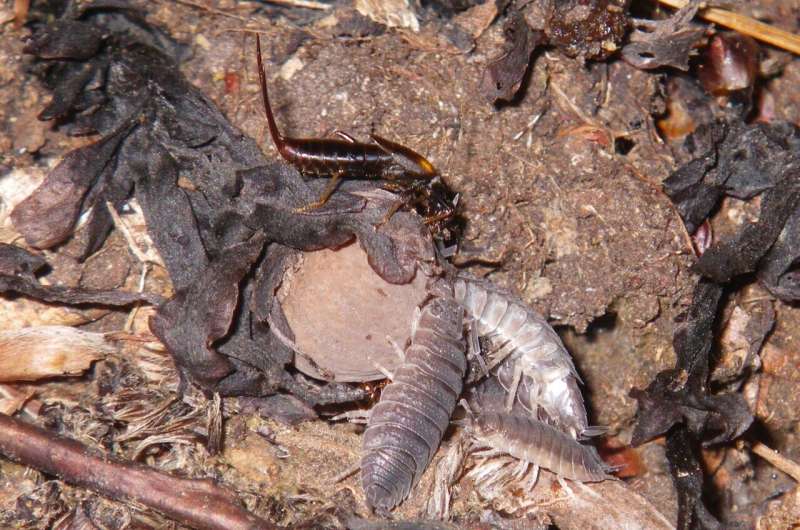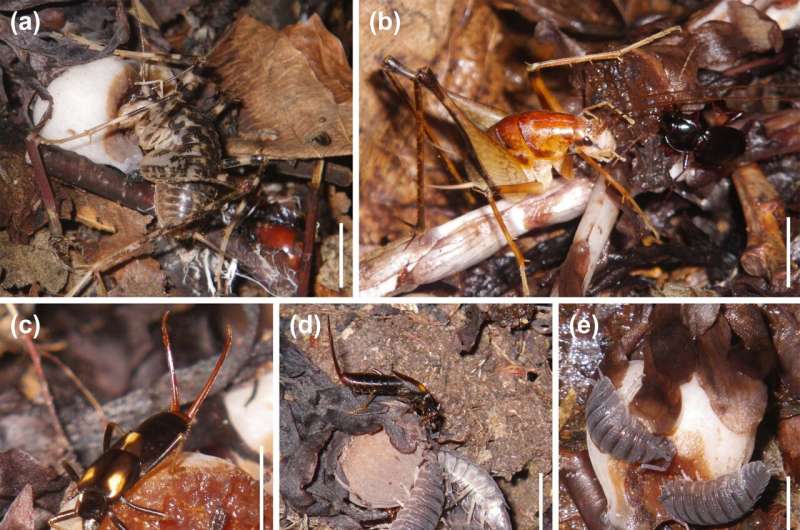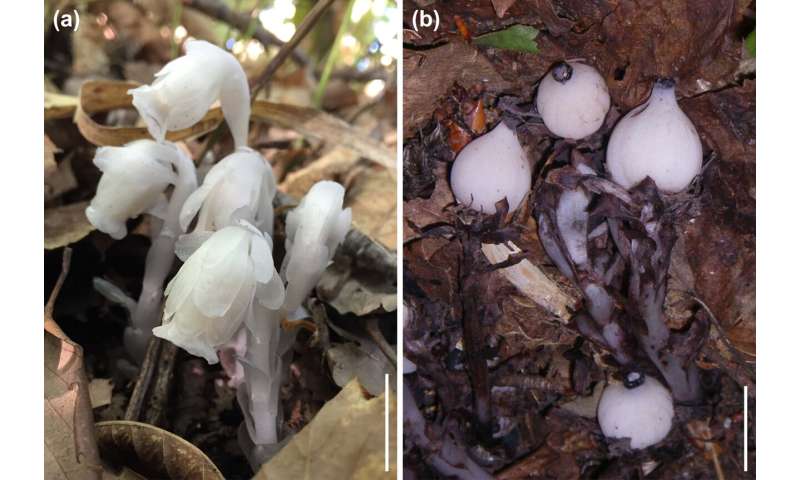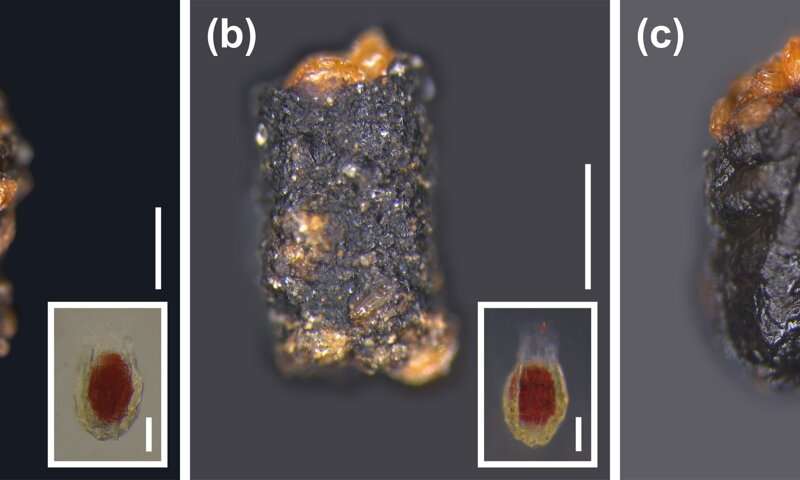This article has been reviewed according to Science X's editorial process and policies. Editors have highlighted the following attributes while ensuring the content's credibility:
fact-checked
peer-reviewed publication
trusted source
proofread
Woodlice hold the new record for smallest dispersers of ingested seeds

Even bugs as small as woodlice can disperse seeds they eat, setting a new record for smallest animal recorded to do so. The Kobe University discovery underscores the crucial yet often overlooked role that small invertebrates play in ecosystems.
Many plants offer fruit to animals so that they also eat the seeds and deposit them at a farther-off place after they have passed through the animal's digestive tract. For this to work smoothly, plant seeds need to be findable by and attractive to the potential disseminator, robust enough to not be damaged in the process, and small and smooth enough to actually pass through.
Considering that seeds of some plants can be as small as dust particles, it is surprising that so far, almost exclusively mammals and birds have been studied as hosts for their dispersal.
"Our group recognized the potential for discovering novel ecological interactions by investigating the roles of less conspicuous organisms such as small invertebrates," says Suetsugu Kenji, a Kobe University botanist specializing in the complex relationships between plants and their dispersers.
He and his team focused on the small, non-photosynthesizing, fungi-eating "silver dragon plant" found across East Asia, known for its minuscule, robust seeds in a fleshy fruit, but where little was known about its method of dispersal.

During the fruiting season of the plant, they took automated photographs of the plants at regular intervals at night and identified which animals ate most of the fruit. They then conducted feeding experiments on these species and subsequent viability analyses on the seeds to ascertain whether the plant's seeds can pass through their digestive tracts intact.
In the journal Plants, People, Planet, the team published their discovery that camel crickets ate more than half of the fruit and also showed the highest viability rate of the passed seeds. To their surprise, woodlice and earwigs also consumed significant amounts of the seeds and showed a reasonable seed survival rate of over 30%, setting a new record for the respectively smallest and most light-weight animals to partake in dispersing seeds after ingesting them.
"Organisms known primarily as seed predators can also engage in mutualistic associations with plants as seed dispersers. Therefore, the behavior of earwigs and woodlice in destroying some seeds during ingestion does not necessarily render them antagonists," write the Kobe University team in their paper.
-

The silver dragon plant (Monotropastrum humile, left) does not use photosynthesis but feeds on fungi in the ground. When the flowers develop into fleshy fruit (right), they come to lie on the ground where they are easily accessible to small animals, which eat the fruit and so also ingest the robust, dust-sized seeds. Credit: Yokoyama Osamu -

Feces containing intact seeds of the silver dragon plant, with stained, viable seeds extracted from the feces in the inset: A: camel cricket (Diestrammena brunneri) feces, B: woodlouse (Porcellio scaber) feces, C: earwig (Eparchus yezoensis) feces. Credit: Suetsugu Kenji
Rather, being able to rely on a greater variety of seed-dispersing animals probably benefits the plant, as this would allow its seeds to be carried to more diverse environments. This makes it more likely for the plant seedling to encounter the fungi it needs for its own sustenance, the researchers argue.
Suetsugu says, "The identification of novel seed dispersal agents among small invertebrates prompts a reevaluation of conservation strategies, emphasizing the importance of preserving diverse habitats that support a wide range of species, including those previously considered ecologically insignificant. We aim to investigate whether similar dispersal mechanisms exist for other plant species, potentially uncovering a widespread ecological phenomenon that has been largely overlooked."
More information: Earwigs and woodlice as some of the world's smallest internal seed dispersal agents: insights from the ecology of Monotropastrum humile (Ericaceae), Plants, People, Planet (2024). DOI: 10.1002/ppp3.10519
Journal information: Plants, People, Planet
Provided by Kobe University





















